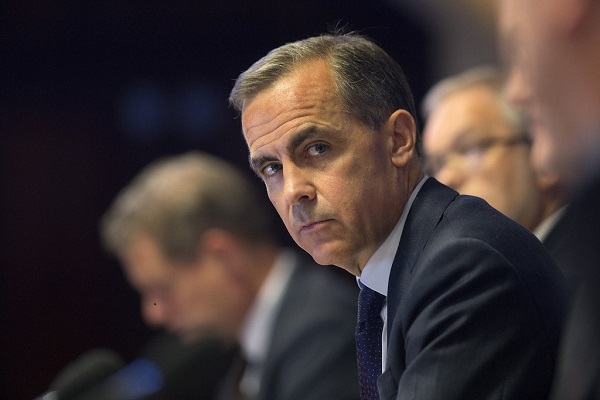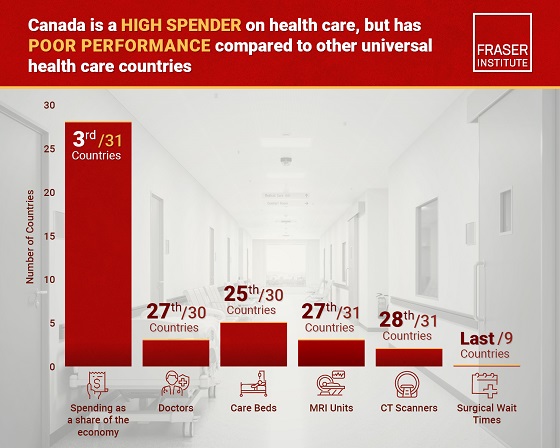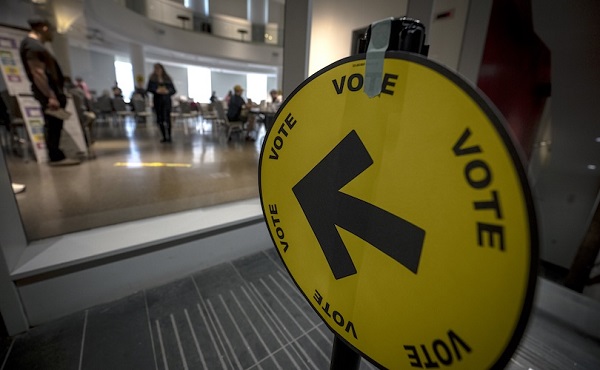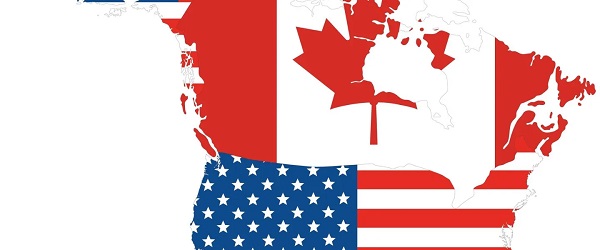Business
Carbon tariff proposal carries risks and consequences for Canada

A carbon tariff—a policy that would impose fees on imported goods based on their carbon emissions—is built on the idea that Canada should penalize foreign producers for not adhering to stringent climate policies. While this may sound like a strong stance on climate action, the reality is that such a policy carries major risks for Canada’s economy. As a resource-rich nation that exports carbon-intensive products like oil, natural gas, and minerals, Canada stands to lose more than it gains from this approach.
Mark Carney, who is competing for the federal Liberal leadership, has made the introduction of a carbon tariff the number two promise in his 16-point industrial competitiveness strategy.
Key problems with a carbon tariff in Canada
1. Retaliation from other countries
A carbon tariff (also known as a Carbon Border Adjustment Mechanism, or CBAM) would not go unchallenged by Canada’s trading partners. Major exporters to Canada, such as the United States and China, are unlikely to accept this policy without a response. They could retaliate by imposing tariffs on Canadian goods, making it significantly harder for Canadian businesses to compete in international markets. This could be particularly damaging for key industries like oil and gas, mining, and manufacturing, which rely heavily on exports. A trade war over carbon tariffs could weaken the Canadian economy and lead to job losses across multiple sectors.
2. Canada is an exporting nation
Canada exports far more carbon-intensive goods than it imports. By introducing a carbon tariff on foreign products, Canada is effectively inviting other countries to do the same, targeting Canadian exports with similar carbon-based tariffs. This would make Canadian goods more expensive on the global market, reducing demand for them and harming the very industries that drive Canada’s economy. The result? A weaker economy, job losses, and higher costs for businesses that depend on trade.
3. Big business paying for consumers’ emissions
The Carney plan also proposes to make large businesses bear the cost of helping individual households lower their carbon emissions. While this may sound like a fair approach, in practice, these costs will be passed down to consumers. Businesses will need to offset these additional expenses, leading to higher prices on everyday goods and services. In the end, it is Canadian families who will bear the financial burden, facing increased living costs, higher taxes, and fewer job opportunities as businesses struggle to absorb the additional costs.
CBAM in context: implications for Canada
Has this been tried elsewhere?
The European Union’s Carbon Border Adjustment Mechanism (CBAM) is currently in effect. It entered its transitional phase on October 1, 2023, during which importers of certain carbon-intensive goods are required to report the embedded emissions of their imports without incurring financial liabilities. This phase is set to last until the end of 2025. The definitive regime, where importers will need to purchase CBAM certificates corresponding to the carbon emissions of their imported goods, is scheduled to begin in 2026.
However, Europe is not Canada’s largest trading partner—that is the United States. With Donald Trump back in the presidency, there is no chance that the U.S. will implement a CBAM of its own. If Canada were to move forward with a unilateral carbon tariff, if anyone prepared to argue that it would not face significant economic punishment from the Trump White House?
Moreover, with 91 percent of the world having no carbon tariff, other countries would impose countermeasures, leaving Canadian businesses struggling to remain competitive.
This raises the question: is the push for a carbon tariff in Canada more about political positioning than economic pragmatism? Given the unlikelihood of U.S. participation, a Canadian CBAM would amount to a unilateral economic sacrifice. While this may appeal to certain voter bases, the reality is that such a policy would carry immense risks without global coordination. Policymakers should carefully consider whether pursuing this path makes sense in a world where Canada’s largest trading partner is unlikely to follow suit.
Where do others stand?
Chrystia Freeland, the former finance minister and current Liberal leadership candidate, has not explicitly detailed her stance on carbon tariffs. However, she has emphasized the importance of defending Canadian interests against U.S. economic nationalism, particularly in response to potential tariffs from the U.S.
Conservative leader Pierre Poilievre is a vocal critic of carbon pricing mechanisms, including carbon taxes, and has pledged to repeal such measures if elected.
Elizabeth May, leader of the Green Party, has consistently advocated for strong environmental policies, including carbon pricing, but has not specifically addressed carbon tariffs in recent statements.
What it means to consumers
Here are some relatable examples of carbon-intensive exports and imports for the average Canadian:
Carbon-Intensive Exports from Canada
Oil & Gas – Canada is a major exporter of crude oil, natural gas, and refined petroleum products, particularly to the U.S. If a carbon tariff were applied to these products, it could make them more expensive and less competitive in global markets, affecting jobs in Alberta, Saskatchewan, and Newfoundland.
Lumber & Pulp – Canada is a leading exporter of forestry products, including lumber, paper, and pulp, which require significant energy and emissions to produce. If tariffs are imposed on Canadian wood products, the forestry sector could suffer.
Agricultural Products – Fertilizers, beef, and grain production all have significant carbon footprints. If trading partners retaliate with tariffs, Canadian farmers may struggle to compete in global markets.
Carbon-Intensive Imports into Canada
Steel & Aluminum – Canada imports a large amount of steel, primarily from China and the U.S., which is essential for industries like construction, manufacturing, and automotive production. A carbon tariff would drive up costs for these industries.
Consumer Goods from China – Many everyday products (electronics, clothing, appliances) are imported from countries with high-carbon electricity grids. A carbon tariff could increase the price of these goods for Canadian consumers.
Food Products – Imported produce, meats, and packaged foods from countries like the U.S. and Mexico often have high transportation-related emissions. A carbon tariff could increase grocery bills.
Business
Canada has fewer doctors, hospital beds, MRI machines—and longer wait times—than most other countries with universal health care

From the Fraser Institute
Despite a relatively high level of spending, Canada has significantly fewer doctors, hospital beds, MRI machines and CT scanners compared to other countries with universal health care, finds a new study released today by the Fraser Institute, an independent, non-partisan Canadian public policy think-tank.
“There’s a clear imbalance between the high cost of Canada’s health-care system and the actual care Canadians receive in return,” said Mackenzie Moir, senior policy
analyst at the Fraser Institute and author of Comparing Performance of Universal Health-Care Countries, 2025.
In 2023, the latest year of available comparable data, Canada spent more on health care (as a percentage of the economy/GDP, after adjusting for population age) than
most other high-income countries with universal health care (ranking 3rd out of 31 countries, which include the United Kingdom, Australia and the Netherlands).
And yet, Canada ranked 27th (of 30 countries) for the availability of doctors and 25th (of 30) for the availability of hospital beds.
In 2022, the latest year of diagnostic technology data, Canada ranked 27th (of 31 countries) for the availability of MRI machines and 28th (of 31) for CT scanners.
And in 2023, among the nine countries with universal health-care systems included in the Commonwealth Fund’s International Health Policy Survey, Canada ranked last for the percentage of patients able to make same- or next-day appointments when sick (22 per cent) and had the highest percentage of patients (58 per cent) who waited two months or more for non-emergency surgery. For comparison, the Netherlands had much higher rates of same- or next-day appointments (47 per cent) and much lower waits of two months or more for non-emergency surgery (20 per cent).
“To improve health care for Canadians, our policymakers should learn from other countries around the world with higher-performing universal health-care systems,”
said Nadeem Esmail, director of health policy at the Fraser Institute.
Comparing Performance of Universal Health Care Countries, 2025
- Of the 31 high-income universal health-care countries, Canada ranks among the highest spenders, but ranks poorly on both the availability of most resources and access to services.
- After adjustments for differences in the age of the population of these 31 countries, Canada ranked third highest for spending as a percentage of GDP in 2023 (the most recent year of comparable data).
- Across 13 indictors measured, the availability of medical resources and timely access to medical services in Canada was generally below that of the average OECD country.
- In 2023, Canada ranked 27th (of 30) for the relative availability of doctors and 25th (of 30) for hospital beds dedicated to physical care. In 2022, Canada ranked 27th (of 31) for the relative availability of Magnetic Resonance Im-aging (MRI) machines, and 28th (of 31) for CT scanners.
- Canada ranked last (or close to last) on three of four indicators of timeliness of care.
- Notably, among the nine countries for which comparable wait times measures are available, Canada ranked last for the percentage of patients reporting they were able to make a same- or next-day appointment when sick (22%).
- Canada also ranked eighth worst for the percentage of patients who waited more than one month to see a specialist (65%), and reported the highest percentage of patients (58%) who waited two months or more for non-emergency surgery.
- Clearly, there is an imbalance between what Canadians get in exchange for the money they spend on their health-care system.
Mackenzie Moir
Senior Policy Analyst, Fraser Institute
Alberta
Petition threatens independent school funding in Alberta

From the Fraser Institute
Recently, amid the backdrop of a teacher strike, an Alberta high school teacher began collecting signatures for a petition to end government funding of independent schools in the province. If she gets enough people to sign—10 per cent of the number of Albertans who voted in the last provincial election—Elections Alberta will consider launching a referendum about the issue.
In other words, the critical funding many Alberta families rely on for their children’s educational needs may be in jeopardy.
In Alberta, the provincial government partially funds independent schools and charter schools. The Alberta Teachers’ Association (ATA), whose members are currently on strike, opposes government funding of independent and charter schools.
But kids are not one-size-fits-all, and schools should reflect that reality, particularly in light of today’s increasing classroom complexity where different kids have different needs. Unlike government-run public schools, independent schools and charter schools have the flexibility to innovate and find creative ways to help students thrive.
And things aren’t going very well for all kids or teachers in government-run pubic school classrooms. According to the ATA, 93 per cent of teachers report encountering some form of aggression or violence at school, most often from students. Additionally, 85 per cent of unionized teachers face an increase in cognitive, social/emotional and behavioural issues in their classrooms. In 2020, one-quarter of students in Edmonton’s government-run public schools were just learning English, and immigration to Canada—and Alberta especially—has exploded since then. It’s not easy to teach a classroom of kids where a significant proportion do not speak English, many have learning disabilities or exceptional needs, and a few have severe behavioural problems.
Not surprisingly, demand for independent schools in Alberta is growing because many of these schools are designed for students with special needs, Autism, severe learning disabilities and ADHD. Some independent schools cater to students just learning English while others offer cultural focuses, expanded outdoor time, gifted learning and much more.
Which takes us back to the new petition—yet the latest attempt to defund independent schools in Alberta.
Wealthy families will always have school choice. But if the Alberta government wants low-income and middle-class kids to have the ability to access schools that fit them, too, it’s crucial to maintain—or better yet, increase—its support for independent and charter schools.
Consider a fictional Alberta family: the Millers. Their daughter, Lucy, is struggling at her local government-run public school. Her reading is below grade level and she’s being bullied. It’s affecting her self-esteem, her sleep and her overall wellbeing. The Millers pay their taxes. They don’t take vacations, they rent, and they haven’t upgraded their cars in many years. They can’t afford to pay full tuition for Lucy to attend an independent school that offers the approach to education she needs to succeed. However, because the Alberta government partially funds independent schools—which essentially means a portion of the Miller family’s tax dollars follow Lucy to the school of their choice—they’re able to afford the tuition.
The familiar refrain from opponents is that taxpayers shouldn’t pay for independent school tuition. But in fact, if you’re concerned about taxpayers, you should encourage school choice. If Lucy attends a government-run public school, taxpayers pay 100 per cent of her education costs. But if she attends an independent or charter school, taxpayers only pay a portion of the costs while her parents pay the rest. That’s why research shows that school choice saves tax dollars.
If you’re a parent with a child in a government-run public school in Alberta, you now must deal with another teacher strike. If you have a child in an independent or charter school, however, it’s business as usual. If Albertans are ever asked to vote on whether or not to end government funding for independent schools, they should remember that students are the most important stakeholder in education. And providing parents more choices in education is the solution, not the problem.
-

 Alberta2 days ago
Alberta2 days agoClick here to help choose Alberta’s new licence plate design
-

 National2 days ago
National2 days agoDemocracy Watch Renews Push for Independent Prosecutor in SNC-Lavalin Case
-

 Business2 days ago
Business2 days agoOver two thirds of Canadians say Ottawa should reduce size of federal bureaucracy
-

 Alberta2 days ago
Alberta2 days agoBusting five myths about the Alberta oil sands
-

 Frontier Centre for Public Policy2 days ago
Frontier Centre for Public Policy2 days agoOttawa Should Think Twice Before Taxing Churches
-

 City of Red Deer1 day ago
City of Red Deer1 day agoPlan Ahead: Voting May Take a Little Longer This Election Day
-

 Business1 day ago
Business1 day agoUS government buys stakes in two Canadian mining companies
-

 Energy1 day ago
Energy1 day agoMinus Forty and the Myth of Easy Energy







